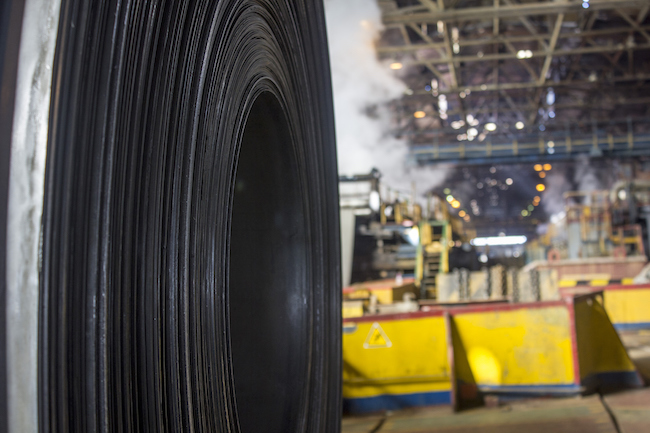
In-Depth
Ontario invests up to $500M in ArcelorMittal to support the electrification of its steel manufacturing
February 15, 2022
By
Canadian Manufacturing


PHOTO: Getty Images
HAMILTON – ArcelorMittal Dofasco and the Ontario government are joining forces on an investment to try and transform the province into a world-leading producer of green steel that will boost the province’s robust auto parts supply chain and skilled workforce in communities with deep roots in steel manufacturing to help meet the global demand for low-carbon auto production.
The approximately $1.8 billion project by ArcelorMittal Dofasco will see its Hamilton facility among the first of its global operations to replace coal-fed coke ovens and blast furnaces with new, low-emission technology. The move to a hydrogen-ready direct reduced iron fed electric arc furnace (EAF) would take advantage of Ontario’s clean electricity supply to eliminate the use of coal and coke from ArcelorMittal Dofasco’s steelmaking process, which is one of the largest sources of greenhouse gas emissions in the province.
The Government of Ontario is contributing up to $500 million in loan and grant support to the project, which will reduce carbon dioxide (CO2) emissions by about three million tonnes annually. The CO2 reduction is equivalent to taking almost one million cars off the road. The shift to “green steel” technology is critical as large automakers and other major manufacturers around the world look to reduce emissions along all their supply chains.
“Not only is this investment great news for the people of Hamilton, this is great news for people across the province as we take another step towards making Ontario a global innovation hub for building the car of the future,” said Premier Doug Ford. “By investing in innovative technologies, we’re strengthening our economy and protecting good local jobs for Ontario workers.”
“Reducing ArcelorMittal’s CO2 emissions intensity worldwide by 25% by 2030 is an ambitious target for a steel and mining company; but we believe it is achievable and that it is our responsibility to invent or innovate the processes and technologies that will enable us to reach that goal,” said John Brett, CEO North America, ArcelorMittal. “As part of that, we understand that in the coming years, the assets used to make steel will undergo a transformation on a scale not seen for many decades.”
“This investment puts us on a path to low-carbon, sustainable steel and is possible only through partnership with government,” said Ron Bedard President and CEO, ArcelorMittal Dofasco. “All options for the newest, most advanced technology that achieves maximum carbon reduction for steelmaking, enhanced product capability and quality, and advanced manufacturing employment opportunities were explored. Extensive benchmarking and modelling were also completed in preparing the ultimate plan for the sustainability of the environment, the company, employees, customers, and the community.”
“As companies like ArcelorMittal Dofasco make significant investments to electrify and reduce emissions, they do so knowing they can rely on Ontario’s clean and affordable electricity system giving them a competitive advantage,” said Todd Smith, Minister of Energy. “Our government is proud to support this expansion of clean steelmaking that will support local jobs in Hamilton. We will continue to build on our significant investments that have reversed the trend of skyrocketing electricity prices as we continue to make Ontario an even better place to do business.”
In cooperation with the federal government, Ontario’s domestic steel industry and its customers, including major automotive, mining, energy, and construction companies, are working together to reduce the environmental impact of their operations and products. This investment will significantly reduce the province’s greenhouse gas emissions (helping move the province toward its 2030 target) and accelerate the province’s pivot to carbon-neutral manufacturing. Ontario’s investment will match the Government of Canada’s investment in the project, announced in July 2021. The goal is to have the project completed by 2028.
Print this page